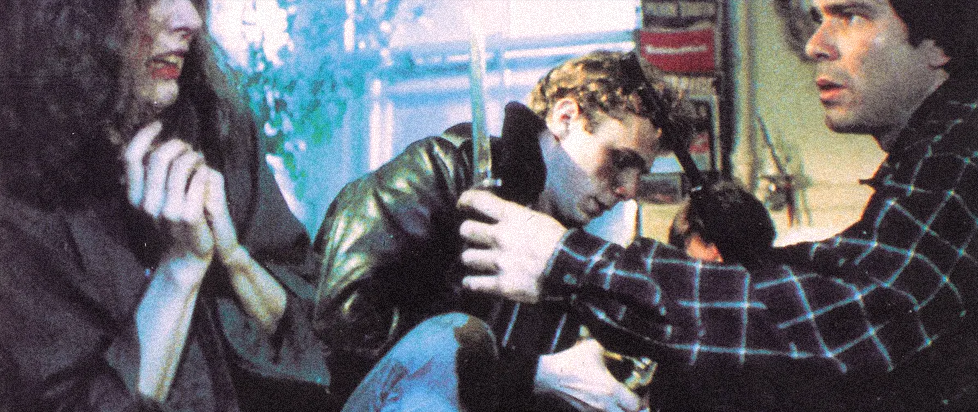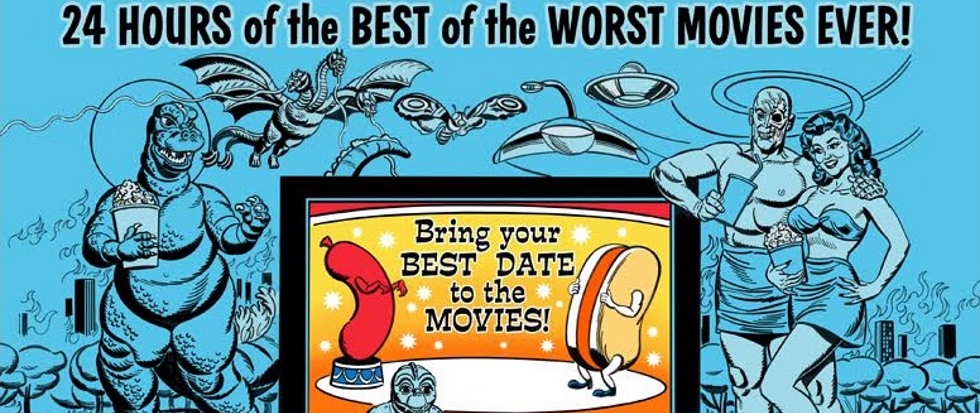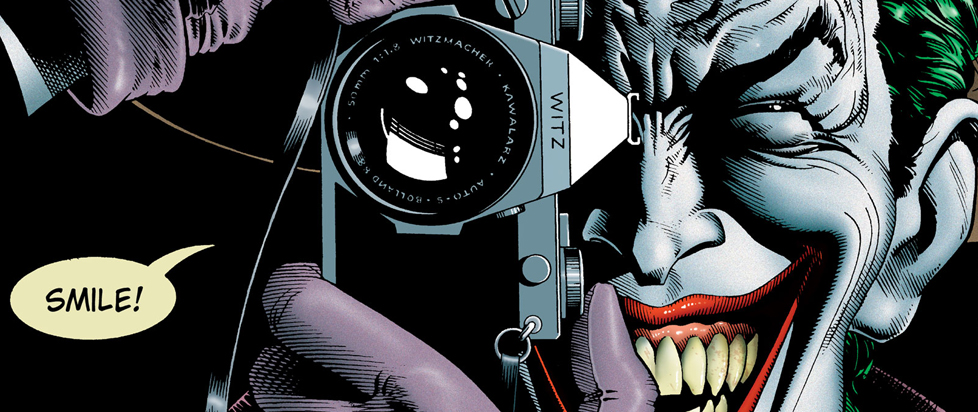
New Order, Same As the Old Order: Siege (1983) on Blu-ray
“I’m telling you, if you don’t hand him over, you’re gonna be in a lot bigger trouble than you bargained for!”
Also released as Self Defense, Siege is a 1983 Canadian exploitation flick that is one of a long line of movies aping John Carpenter’s Assault on Precinct 13. It’s also probably one of the best ones. A review at TVGuide.com calls it “frighteningly effective” and “reminiscent of Assault on Precinct 13, though it is not quite as effective,” while also (as so many synopses of the movie seem to do) getting the plot details slightly wrong.
The actual plot goes something like this: During a (real life) police strike in Halifax in 1981, a right-wing militia calling themselves the “New Order” push their way into a gay bar and start roughing up the clientele. The opening assault is deeply disturbing, even before any violence begins, and violence begins in relatively short order, when the confrontation ends with the bartender dead after a fall onto a broken bottle.
The toughs panic and call their handler, who comes in and methodically executes everyone in the place because otherwise this could be “very damaging to our cause,” as he puts it. Only one of the bar’s patrons escapes, eventually taking refuge in a nearby apartment, which puts us firmly in Precinct 13 territory, even if the film’s opening titles and pulsing soundtrack hadn’t already done so.
Armed with military-grade weapons (complete with silencers) and a sniper with an infra-red scope on the roof across the street, the militia lays siege to the apartment, while the group of folks inside have to defend themselves with nothing but a few homebrew booby traps, a rifle with two bullets, and a bow with a single arrow. From there, Siege hits a lot of the usual beats, but manages to maintain a sense of highly-pitched tension throughout.
Here’s the thing, though: No, Siege isn’t as effective as Assault on Precinct 13, but it may be more socially responsible. It would be easy enough for a movie with this logline to glorify the kind of rugged survivalism so often exalted in action movies of the ‘80s. “If only everyone were more prepared for this kind of trouble,” it could easily say, “think how differently this could have gone.”
Except that the people who fare the best are, in many ways, those who are the least prepared. Indeed, Siege is a movie that feels like it has a lot to unpack when it comes to masculinity, and the connection between machismo and using violence to get what you’re after, whether that’s intimidating people who (let’s be honest) intimidate you, like the right-wing militia at the beginning, or just making it through the night, like the survivalist member of the besieged apartment-dwellers.
After all, the folks in the apartment would have had more bullets for that rifle had he not fired them off at the beginning of the police strike. And it seems not for nothing that Chekhov’s sleeve-knife ultimately goes unused when it is most needed.
What really helps to establish Siege as a more socially-conscious take on the material, though, is in the identity of its bad guys. I’ve argued before that Assault on Precinct 13 is not really interested in a “cops and robbers” type storyline. That the silent, implacable, multiracial gang that terrorizes the precinct (staffed with mostly civilians) are really a force of nature, sharing more in common with Romero’s ravening hordes of flesh eaters than any real-world outgroup.
Which is a long way of saying that, while on its surface Precinct 13 looks like yet another movie lamenting society’s collapse into lawlessness in the wake of the Manson Family murders and the failure of the Summer of Love, it’s actually not terribly interested in being about that, and is just using it as the set dressing to tell a cosmic horror tale about individuals assailed by a carnivorous cosmos, pretty much.
Siege, on the other hand, foregrounds the motives of its villains. They are here to “send a message” to the patrons of the gay bar they terrorize at the beginning of the film. “Being a homo is not a normal way of life,” one of them tells the bartender, shortly before the latter is dead on the barroom floor.
Nearly forty years later, the right-wing fascists at the heart of Siege – with their bullying and their bigotry, their cowardice and their fetishization of firearms – are unfortunately familiar. In the last few years, we’ve seen their ilk rise to prominence in various ways, from the so-called Proud Boys to Kyle Rittenhouse, the 17-year-old murderer described by the AP as a “police admirer” who gunned down two people during a Black Lives Matter protest, to the insurrection of January 6, 2021. Siege’s spate of villains could have been any one among their number.
The flick saves perhaps its most damning indictment for the stinger, however. This is a movie that’s only about a decade shy of having been around for half-a-century, but it’s also one that’s seldom seen, especially prior to Severin’s recent Blu-ray release. So, if you haven’t seen Siege and what I’ve already written is enough to make you want to check it out cold, stop now, because I’m gonna spoil that ending sucker punch.
As easy as it would be for Siege to glorify a kind of self-made survivalism, it would be even easier for it to lionize police. There’s a reason why all of this is happening during a police strike, after all, right? Oh yes, there absolutely is, but not necessarily the one that you might think.
Sure, the police never come during the night’s long standoff, in part because they’re on strike, in part because the phone lines are cut in short order. But as someone watching the film in 2021 and looking backward, you have to wonder whose side they would be on, if they did show up. The movie doesn’t wonder, though. It knows, and it makes no bones about it in that stinger I mentioned.
Once the last of the assailants are finally done in by the defenders of the apartment, save one who flees because of his injuries, the view cuts to a picturesque scene of a mother and her daughter playing ball in the park, along with titles telling us that the police strike has ended. The ball rolls to a stop at the foot of a police officer and, as the camera pans up, it is probably no surprise that it reveals the cop in question to be the one surviving member of the militia group.
Drop mic. Roll credits.



